Disclaimer: This post may contain Amazon affiliate links. Sudachi earns a small percentage from qualifying purchases at no extra cost to you. See disclaimer for more info.
What is Zaru Soba?
Zaru Soba (ざるそば) is a Japanese dish that consists of buckwheat noodles boiled, cooled in cold water, and served on a bamboo tray called a “zaru.”
The dish is typically served with finely chopped nori seaweed, chopped spring onions, wasabi, and other condiments. It is then dipped in a dashi-based dipping sauce.
According to the National Federation of Noodle Manufacturing Cooperative Associations, true Japanese soba noodles (日本そば) are made from a mixture of 30% buckwheat flour and 70% wheat flour.
The “zaru” is a flat bamboo straining tray commonly used to drain excess water from cold soba or udon noodles in Japan. If you do not have a zaru, you can use a bamboo sushi mat or sieve placed on top of a bowl or plate as an alternative option.
The origins of Zaru Soba can be traced back to the Edo period (1600 – 1868). Soba noodles were originally served on bamboo trays at a Tokyo restaurant called “Iseya.” Later on, nori seaweed was added to the dish to differentiate it from the original dish called “morisoba,” which was served without the seaweed.
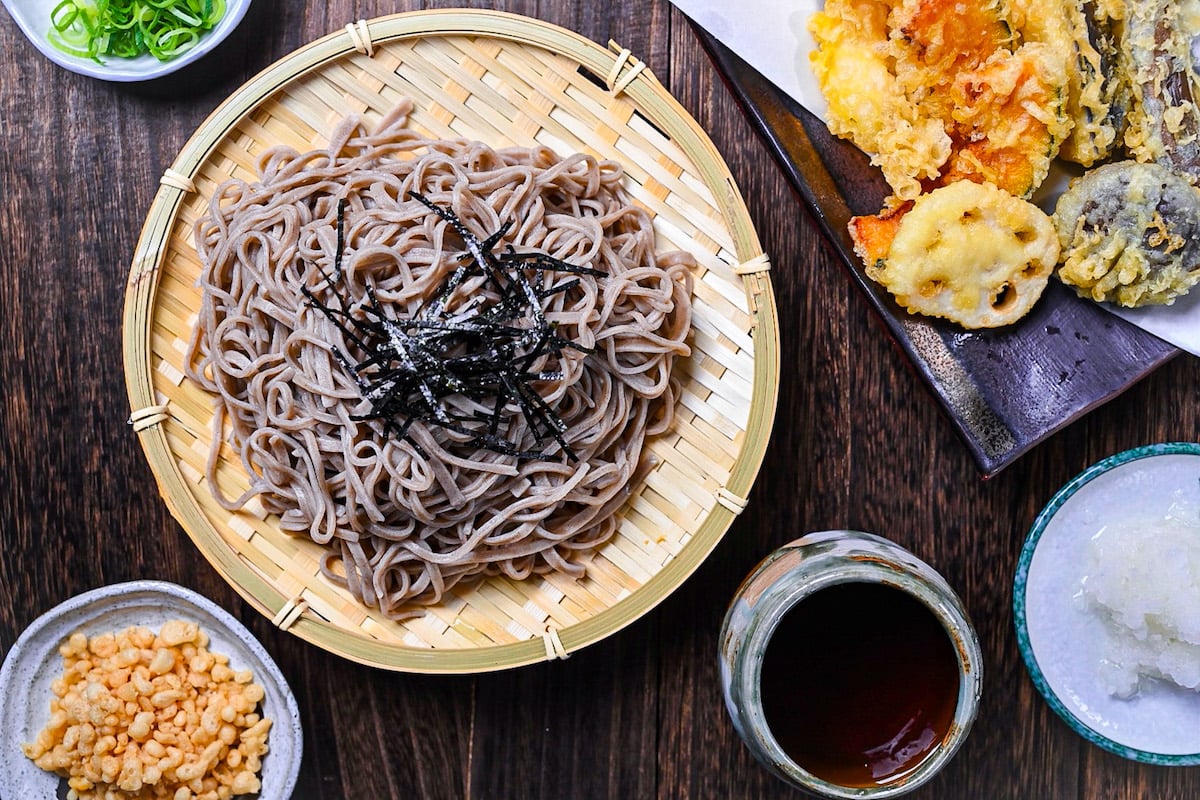

How I Developed This Recipe
In developing my zaru soba recipe, my goal was to capture the same authentic and straightforward flavors that I achieved with zaru udon. I wanted to create a dish that was true to its traditional roots and accessible for anyone to make at home.
Central to this dish is the dipping sauce, which I’ve crafted to be entirely homemade. This ensures that you can easily replicate the full, rich taste of the sauce in your own kitchen, without the need for store-bought alternatives.
The sauce complements the soba noodles perfectly, enhancing their subtle flavor and adding depth to the overall dish!

Ingredients & Substitution Ideas
- Dashi Stock: Choose any dashi that suits your preference. Convenient options include dashi packets and instant granules. For those inclined towards homemade versions, consider trying my favorite dashi, simple awase dashi, or vegan dashi recipes.
- Soy Sauce: I recommend Kikkoman soy sauce as a cost-effective and trustworthy option. Dive deeper into the world of soy sauce with my dedicated soy sauce guide tailored to Japanese cuisine.
- Mirin: When shopping for mirin, I recommend always choosing “hon mirin” (本みりん) for authentic flavor. Hinode Hon Mirin is a good choice in terms of quality and cost. For a broader perspective on Japanese condiments, don’t miss my 20 Most Useful Condiments and Seasonings for Japanese Cooking article.
- Sugar: While standard sugar works well, I often like to use brown cane sugar.
- Soba Noodles: Dried soba noodles are the most straightforward and recommended option for homemade preparations.
- Shredded Sushi Nori Seaweed (Kizami Nori): An optional addition, but it certainly elevates the dish’s visual appeal.
- Wasabi Paste: To me, zaru soba feels incomplete without wasabi. However, it’s a matter of personal preference, so choose between wasabi paste or fresh wasabi, or skip it altogether.
- Grated Ginger: A delightful choice for those who enjoy its zing. Especially handy if you’ve decided against wasabi, ginger paste introduces a refreshing twist.
- Tempura Flakes (Tenkasu): Immerse them in mentsuyu to let them absorb the flavors. While I consider them indispensable for zaru soba, they can be left out based on individual taste.
- Finely Chopped Green Onion: An optional sprinkle that infuses the dish with a burst of color and freshness.
Use a plant-based dashi such as my shiitake and kombu dashi to make this dish suitable for vegetarians and vegans!
Curious about the exact brands and products that bring my recipes to life? Discover the brands and ingredients behind my recipes at the Sudachi Amazon Storefront. Explore my handpicked pantry essentials and find your next kitchen favorites!
Jump to Full Recipe Measurements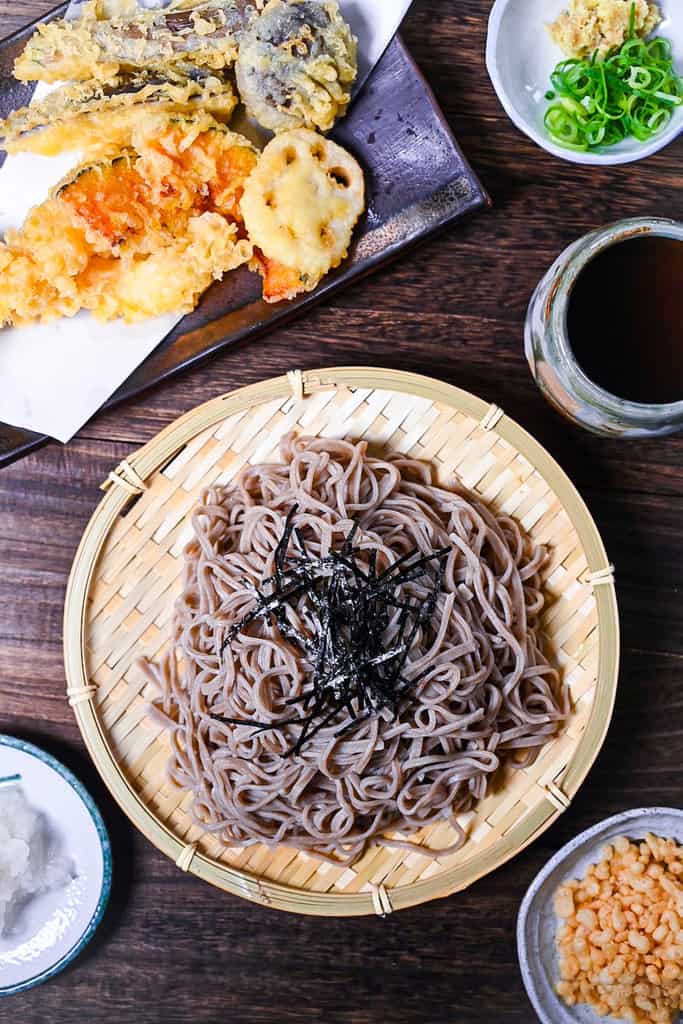
Visual Walkthrough & Tips
Here are my step-by-step instructions for how to make Zaru Soba at home. For ingredient quantities and simplified instructions, scroll down for the Printable Recipe Card below.
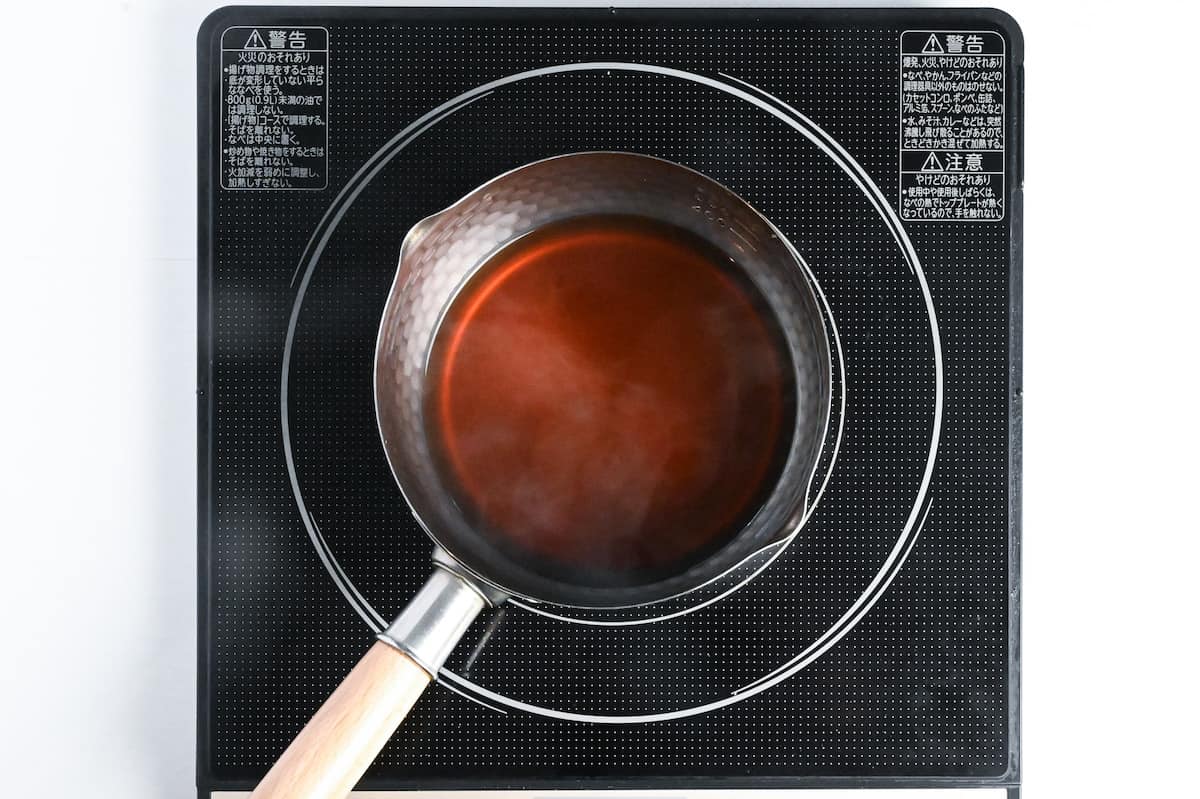
Add the dashi stock, soy sauce, and mirin to a saucepan and boil for 1 minute. Add the sugar and mix until dissolved, then remove from the heat.
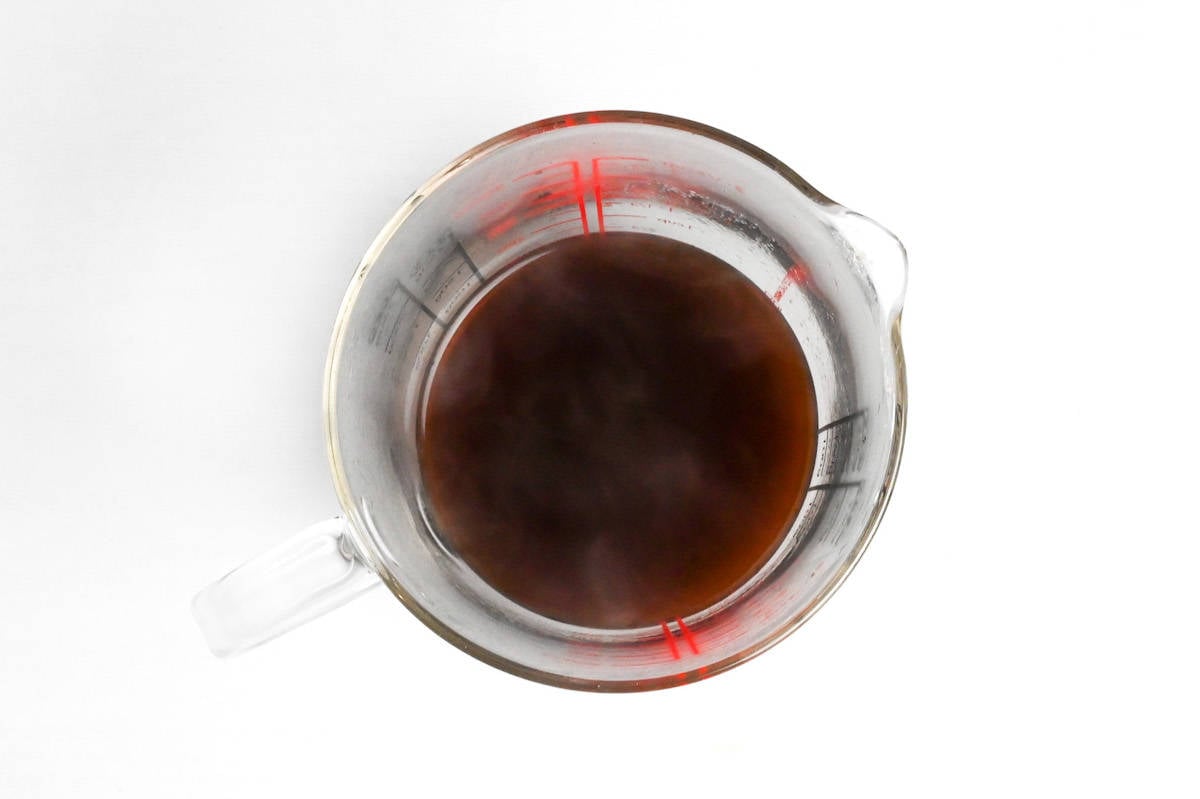
Transfer the sauce to a heatproof jug and add 1 dried shiitake mushroom. Allow to cool, and once cool to the touch, chill in the fridge until it’s time to serve.
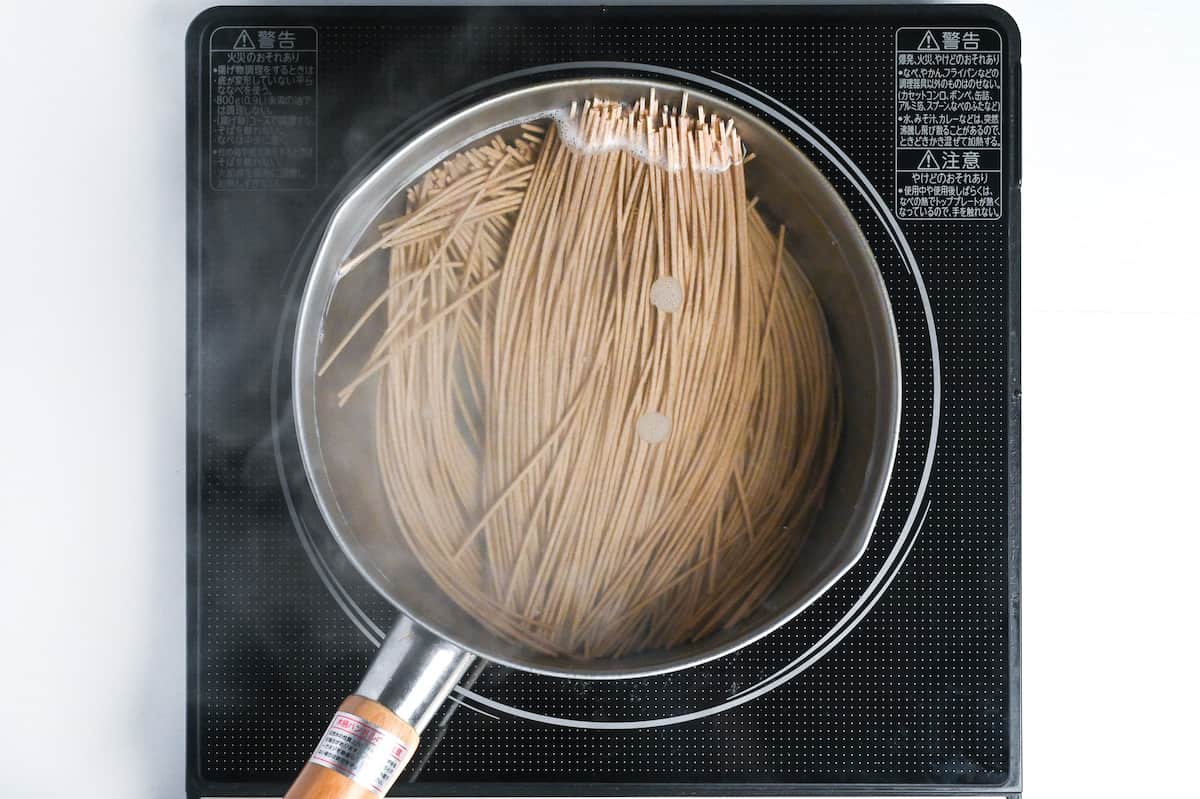
Bring a pot of water to a rolling boil and cook your soba noodles according to the instructions on the packaging.
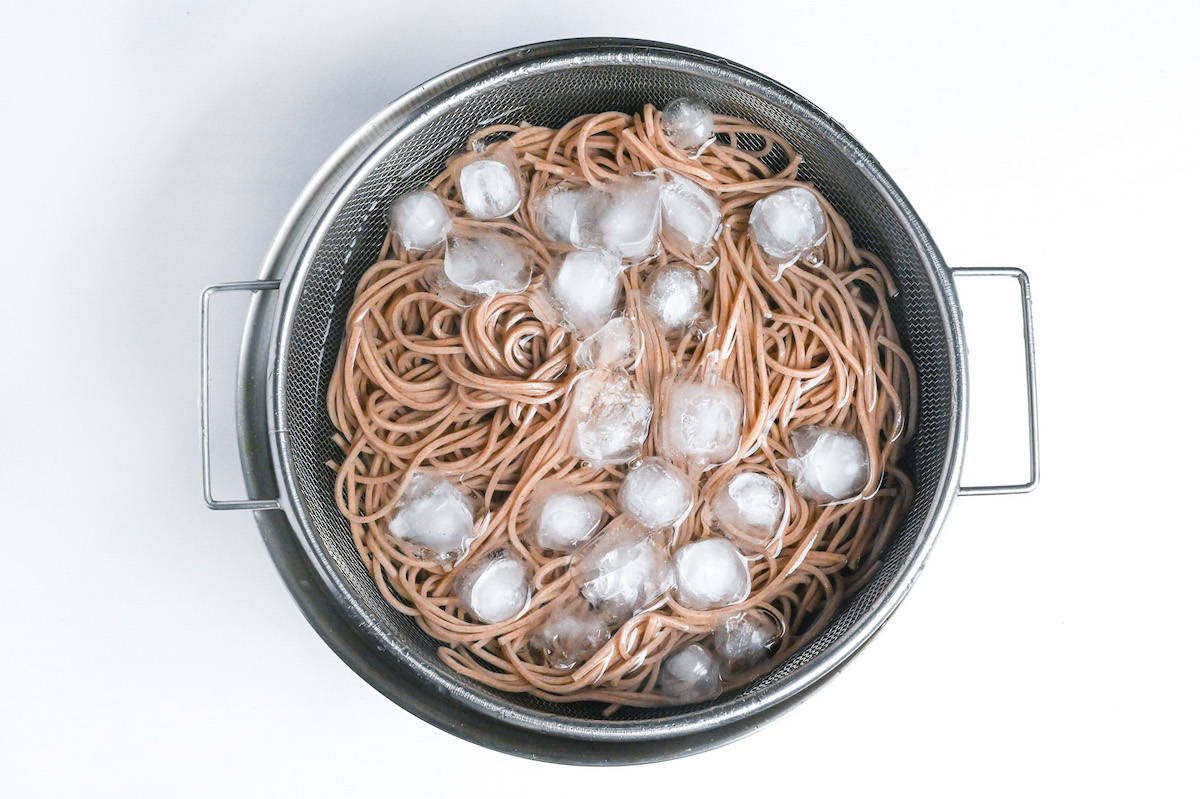
Place a sieve or colander in the sink and pour the soba noodles in to drain. Rinse with cold water to cool them quickly, then place the sieve in a bowl of cold water and add ice to make the noodles extra cold and stop them from sticking together.
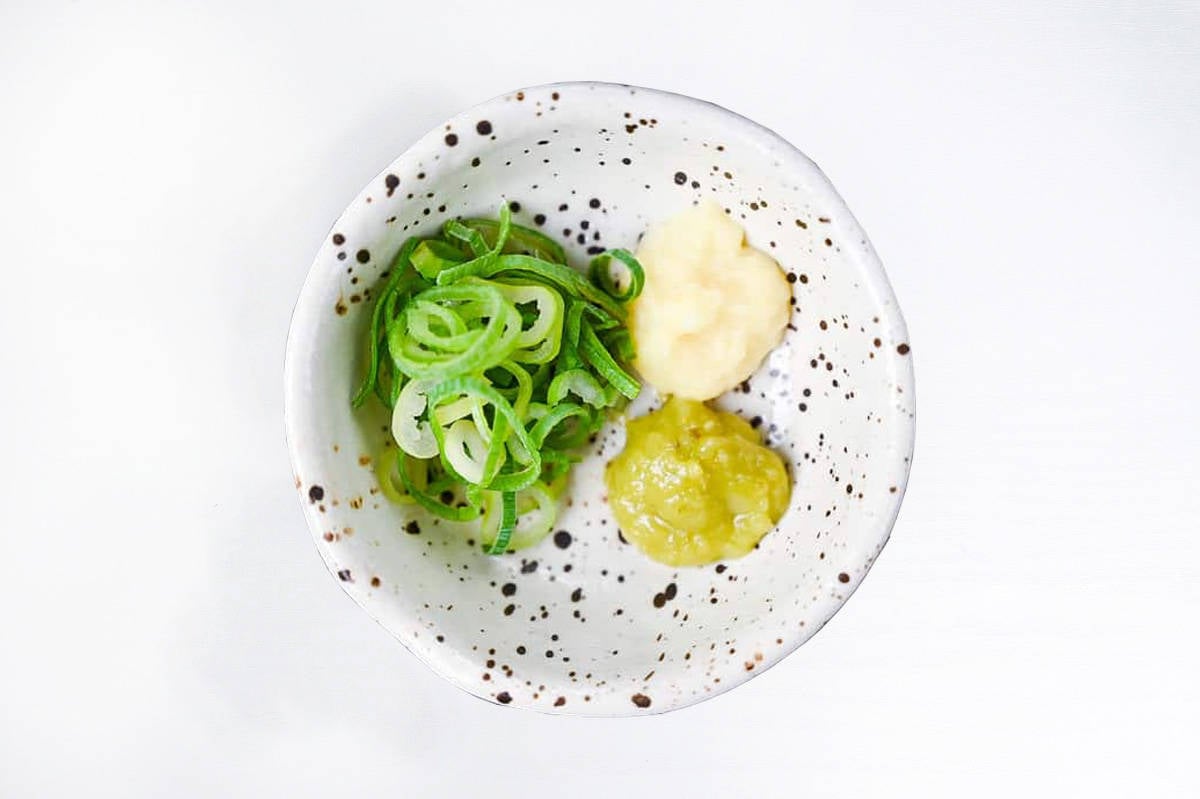
For each serving, arrange a small plate with a pinch of chopped green onion and a blob of grated ginger and wasabi (optional). I also recommend serving zaru soba with tenkasu (tempura bits) to soak up the flavor of the sauce!
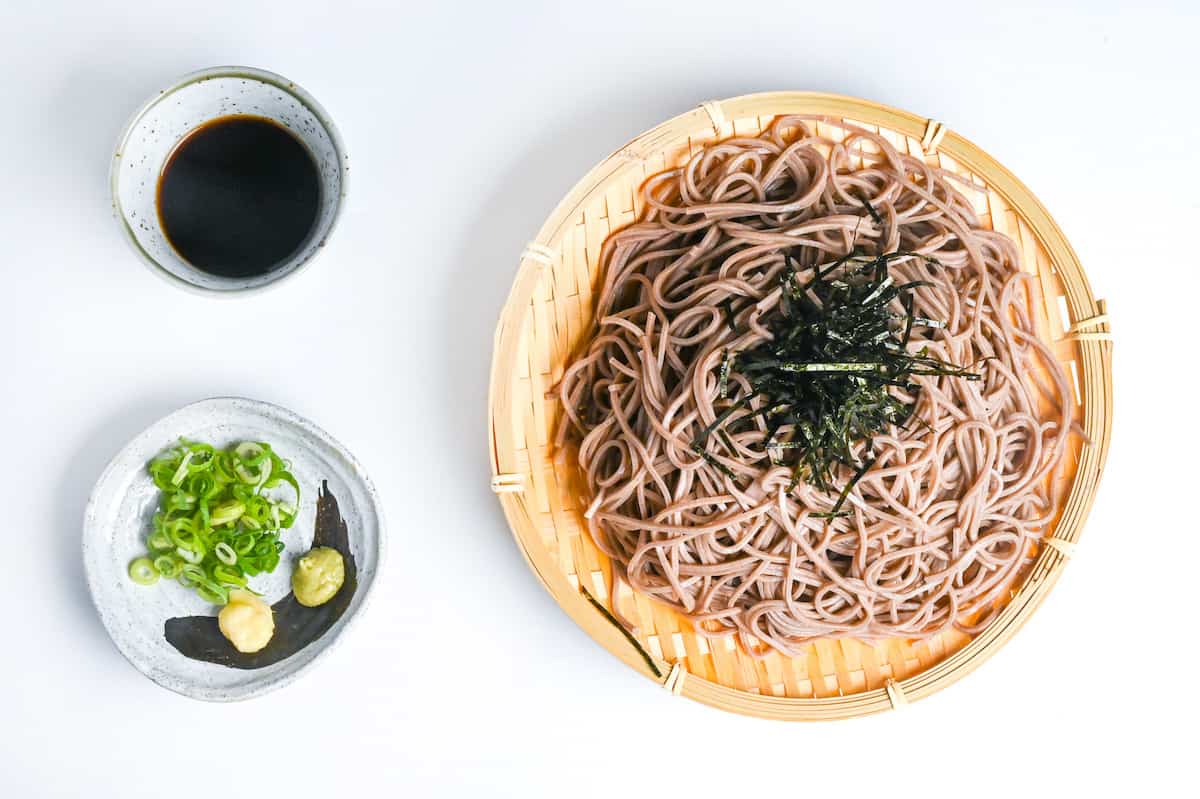
Drain the soba and transfer it to a bamboo tray (or similar) with a plate underneath to prevent leaks. Top with shredded nori and serve each portion with its own bowl of dipping sauce and a small plate of additional ingredients.
Mix your choice of ingredients into the sauce, dip the noodles in and enjoy!
Jump to Full Recipe Measurements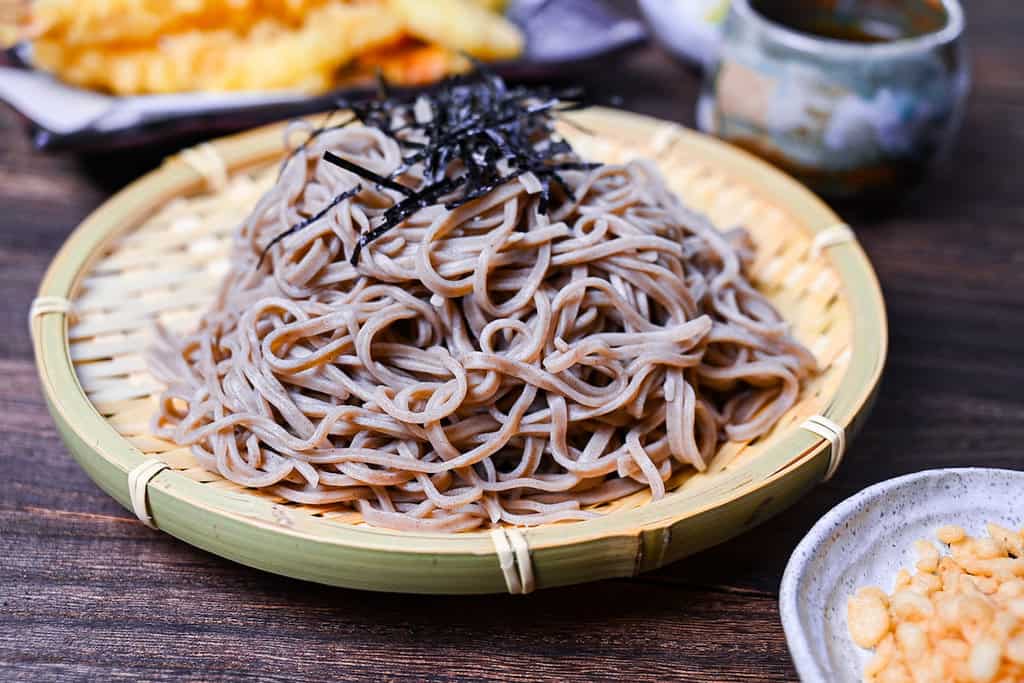
How to Store
For optimal soba texture, eat them immediately after cooking. If they dry and clump together, rinse with fresh water to revive and unstick them. For later use, wrap in plastic, refrigerate, and eat within 24 hours.
You can keep the mentsuyu sauce in a sterilized container in the fridge for up to two weeks or freeze it for up to one month.
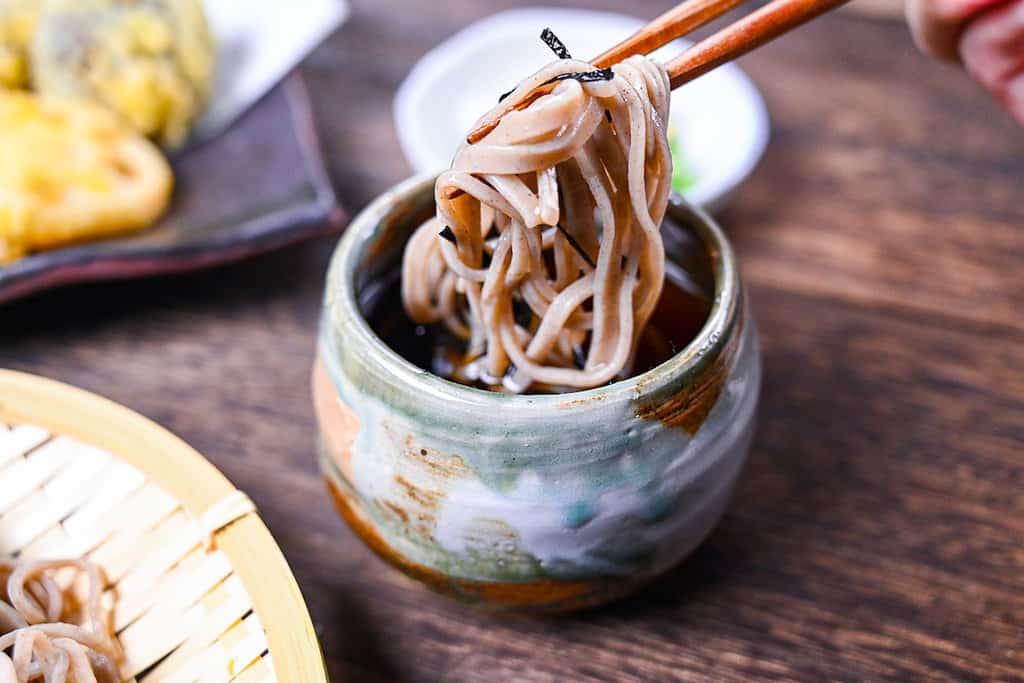
I hope you enjoy this Zaru Soba recipe! If you try it out, I’d really appreciate it if you could spare a moment to let me know what you thought by giving a review and star rating in the comments below. It’s also helpful to share any adjustments you made to the recipe with our other readers. Thank you!
More Japanese Noodle Recipes
- Nagasaki Champon Ramen Noodles (Ringer Hut Style)
- Taiwan Mazesoba (Nagoya’s Spicy Brothless Ramen)
- Soba Noodle Salad with Summer Vegetables
- 15 Minute Spicy Tsukemen (Dipping Ramen)
Want more inspiration? Explore my Japanese Noodle Recipe Roundup Post for a carefully selected collection of tasty recipe ideas to spark your next meal!
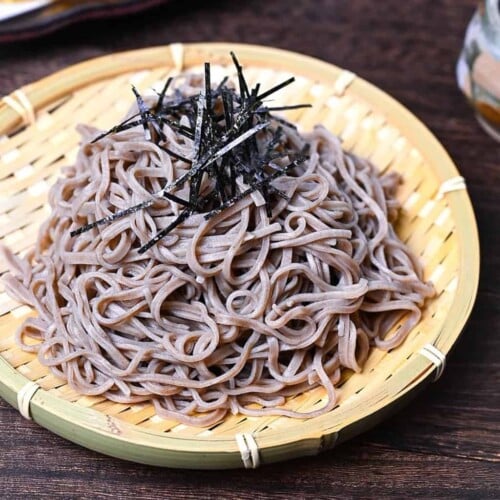
Zaru Soba (Cold Buckwheat Noodles with Homemade Dipping Sauce)
Equipment
- Bamboo Zaru
Ingredients
- 100 ml dashi stock Use kombu/shiitake dashi for plant-based diets
- 20 ml soy sauce
- 20 ml mirin
- 1 tsp sugar
- 1 dried shiitake mushroom
- 120 g dry soba noodles (approx 60g/2oz per portion)
- ice cubes for cooling
- 2 tbsp shredded sushi nori seaweed “kizami nori” (kizami nori) optional
Additions
- 1 tsp wasabi paste
- 1 tsp ginger root grated
- 2 tbsp tempura flakes (tenkasu) (tenkasu/agedama)
- 2 tbsp finely chopped green onions
Instructions
- Take a small pan and add 100 ml dashi stock, 20 ml soy sauce and 20 ml mirin. Boil for 1 minute, add 1 tsp sugar to the pan and mix until dissolved.

- Take the pan off the heat, pour the dipping sauce into a heatproof jug and add 1 dried shiitake mushroom. Leave to cool, then once cool to the touch, chill in the fridge for 20-30 minutes.

- Cook 120 g dry soba noodles according to the instructions on the packaging (usually 5-6 minutes).

- Once cooked, pour the soba noodles into a strainer and drain away the cooking water. Rinse under cold water and add a few ice cubes to chill them quickly.

- Divide 1 tsp wasabi paste, 1 tsp ginger root, 2 tbsp tempura flakes (tenkasu) and 2 tbsp finely chopped green onions between small individual serving plates.

- Place the soba noodles on the "zaru" and sprinkle 2 tbsp shredded sushi nori seaweed “kizami nori” over the top. Serve each portion with individual cups of dipping sauce and the plate of additional ingredients to mix in.

- Enjoy it on its own or with crispy tempura!
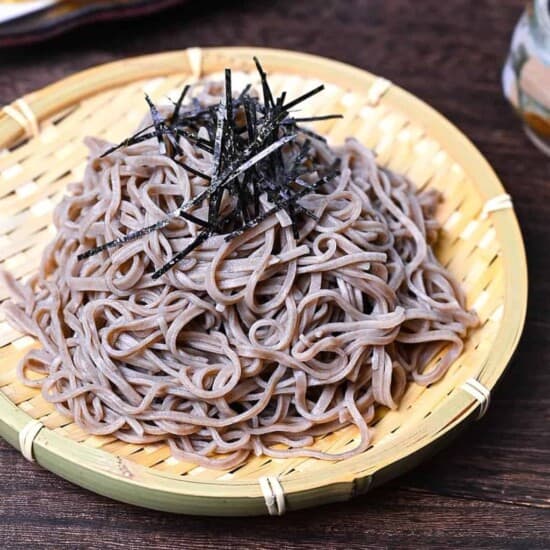


Leave a rating and a comment